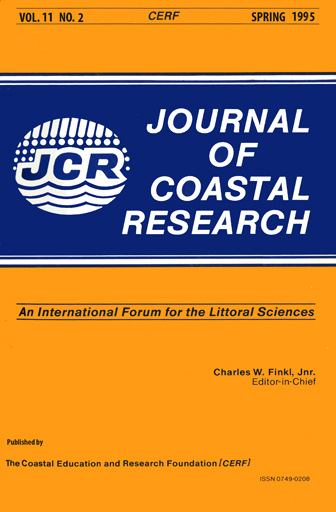Relationships among Marsh Surface Topography, Hydroperiod, and Soil Accretion in a Deteriorating Louisiana Salt Marsh
Keywords:
Accumulation, organic matter, mineral matter, flooding, marsh lossAbstract
The relations among marsh elevation, flooding frequency and duration, an d marsh accretion in Spartina alternfiora marsh in coastal Louisiana were evaluated over a 39-month period by using field surveys, tide gauge records, and direct measures of recent accretion above artificial soil markers. New sample plots were randomly selected at the beginning of each of two time periods, April 1985-March 1990 (Period I) and December 1989-July 1991(Period 2), and vertical accretion was measured seasonally during both periods. Hydroperiod was calculated for each plot by using the mean elevation of the marsh surface at each plot and local tide gauge records. The range in elevations of the Period 1 field plots (2.1 cm) differed considerably from Period 2 field plots (12.1 cm). Marsh surface topography exerted a strong influence on the frequency and duration of marsh surface flooding, with plots at lower elevations flooded a greater percentage of the time than plots at higher elevations (41 vs. 37% for Period 1; 73 vs. 50% for Period 2). Accretion was significantly related to duration of flooding during both periods (p = .037, Period 1; p = 0.019. Period 2). Accumulation of both organic and mineral matter was also significantly related to duration of flooding (p = 0.007, organic; p = 0.009. mineral), implying that allochthonous organic matter as well as mineral matter was delivered to the marsh surface during flooding. These data indicate that accretion and accumulation varied temporarily and spatially in relation to hydroperiod and suggest that accretion at lower marsh elevations is not always sufficient to maintain an equilibrium position in the intertidal zone.


